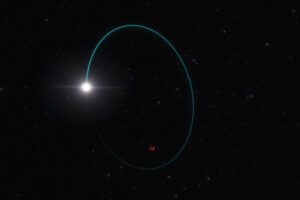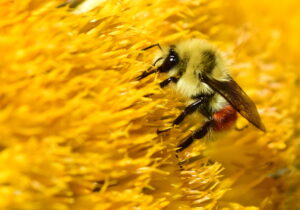Nearly a millennia ago, Chinese and Japanese astronomers saw a bright star suddenly appear in the constellation Cassiopeia. It was visible for six months before it faded from sight.
Now, a Dartmouth professor may finally have solved the mystery of the star’s identity — and the results are both spectacular and new to science.
Robert Fesen, a physics and astronomy professor, captured telescopic images that “show a fireworks-like burst of thin filaments radiating from a highly unusual star at the center of an object called Pa 30,” an article from Dartmouth University said.
He announced the findings on Jan. 12 at the 241st meeting of the American Astronomical Society. He’s also the lead author of a paper reporting the findings submitted to the peer-reviewed journal The Astrophysical Journal Letters. It’s awaiting peer review before publication.
Supernovas are often the poster child for awe-inspiring space photos, with kaleidoscopes of color and intricate patterns. Even so, the images uncovered by Fesen — of a supernova exploding like fireworks — offer something decidedly new.
“I have worked on supernova remnants for 30 years, and I’ve never seen anything like this,” Fesen told Nature.
What Are We Looking At?
Put simply, Fesen’s images likely show the explosive aftermath of the collision of two dying stars known as white dwarfs.
The object, Pa 30, is a nebula, defined as a dense region of illuminated gas, dust, and other matter. The researchers found that Pa 30 contained little hydrogen or helium, but was rich in the elements sulfur and argon.
That was the clue they needed. The team imaged the “remnant” of the supernova with an optical filter sensitive to those elements. In late 2022, they used the 2.4-meter Hiltner Telescope at the Michigan–Dartmouth–MIT Observatory at Kitt Peak, Arizona.
The result? Confirmation they were looking at the supernova observed by Chinese and Japanese astronomers 850 years ago — and an image like no other, with hundreds of colorful lines radiating outwards.

Supernova remnants tend to look more like the Crab Nebula seen here. Beautiful, but far different from the remnant image of Pa 30. Photo: Retouched image from NASA/Shutterstock
“I have never seen any object — and certainly no supernova remnant in the Milky Way galaxy — that looks quite like this, and neither have any of my colleagues,” Fesen said in the Dartmouth article.
“The guest star was bright enough that three separate groups in China observed it within a couple of days of each other and it also was seen in Japan. A new star as bright as Vega would’ve been quite noticeable. To the ancients, their TV set was the sky, so they would’ve easily noticed and certainly recorded the sudden appearance of a bright new star in the heavens.”






